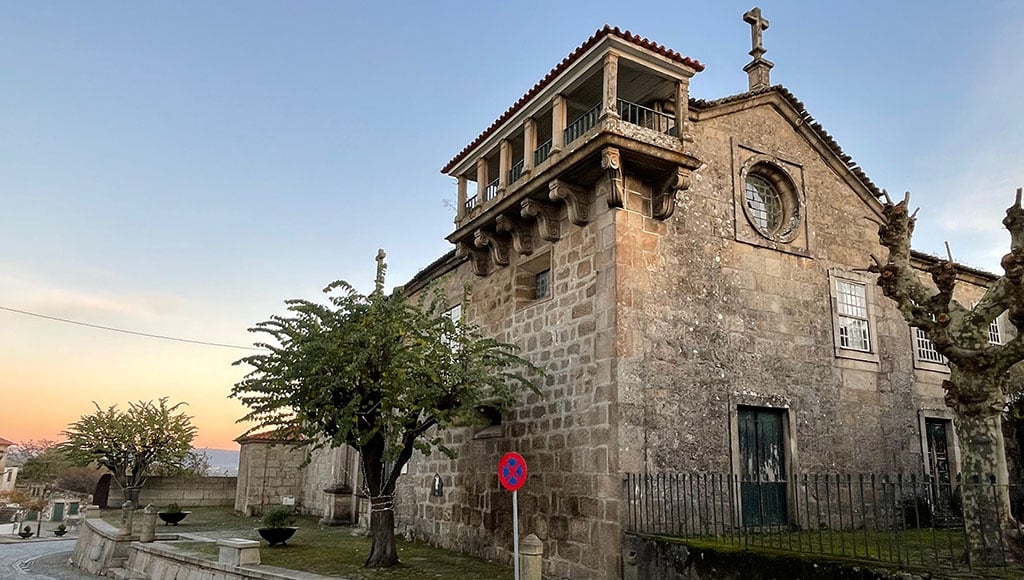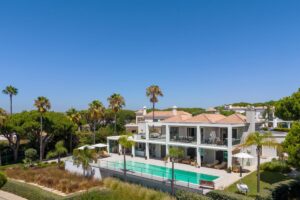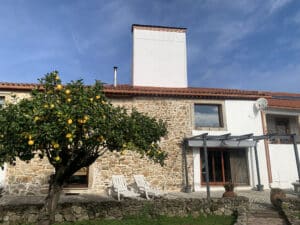My excitement grew as I approached the historic town of Moimenta da Beira, in the Viseu district, looking for a 16th century ‘Convento’.
The owner of this historic property had contacted me, requesting that I look over this former family home as it now lay empty.
Would Rural Properties list the property? Of course, as long as the documents are in order and the owner has definitely made up his mind to sell. Both questions were a ‘yes’ and the grand tour of the buildings and grounds began.
The chance of snooping around an old Convent has its own attractions and I was not disappointed. These substantial properties certainly were built to last, and this one has lasted well, with room after room of original wooden floors, lime plaster and solid stone walls, all in good condition.
Portugal has many huge, privately-owned properties, each with its own history and inherent romanticism from times gone by, when colonial income poured into the country.
Privately-owned assets on the scale of this 10-bedroom Convento are not uncommon. This property has 1,847m2 (20,000 square feet) of usable space and sits in nearly four hectares of land, offering remarkable value for money, although private buyers need to be fully aware of the renovation work that needs to be carried out, or the costs will overrun, even with the benefit of available tax breaks.
Many of these large properties struggle to find buyers through mainstream agency marketing methods. However, ‘love conquers all’ and some well-heeled private buyers do take on the job of bringing beautiful old properties back to life as private homes.

Financially, if the purchase and renovation costs are lower or equal to the market value on completion, any such project can be viewed as a remarkable success, but it is often property price inflation over time that helps to sooth the pain, eating away at any negative equity.
More likely, ‘for business use’ is a more rational option and many landmark properties have Council leeway for change of use. Prospective new owners are in the driving seat if they can provide detailed plans for commercial project options such as a boutique hotel, a collection of tasteful apartments, a care home or even a corporate head office.
From a municipality viewpoint, anything that halts the deterioration of a landmark building is good and anything that creates local jobs is better still.
One canny owner who appointed Rural Properties to handle the sale of his farming estate, with its barns, staff quarters, storage buildings, olive oil factory, winery and original farmhouse, had the good sense to talk to his local Council.
The 38-hectare Quinta da Retorta estate, near Penedono in the Viseu district, now benefits from a detailed report covering the economic and environmental effects of a tourism development project.
The property now is for sale along with the Council’s agreement for a 22-unit hotel and an additional 182 detached family houses.
Once a significant wine, olive and fruit producing estate, Quinta da Retorta is in an area designated as ‘ecological reserve’, but the care given in the analysis to the biodiversity of the local fauna and flora, and the prospect of multiple new jobs in the area, switched the Council’s planning light from red to green.
The Penedono area traditionally produces rye, corn and potatoes in a countryside rich in chestnut trees, vineyards, olive and almond orchards alongside cattle-raising and dairy, so the incorporation of a significant ‘agricultural and local produce’ element into the Quinta da Retorta tourism project made good sense.
The skill here was in creating a development plan that ensured the estate becomes a destination rather than just another place to stay. This is very much in tune with the market, linking nature with tranquillity.
A new owner will be able to engage with the local planning department in the knowledge that it already has contributed towards the study that approved the estate’s metamorphasis.
One 1840s mansion, where all the hard work has already been done, near Tondela, Viseu, is Quinta dos Três Rios, which has been meticulously renovated by a British couple who discovered also that the estate’s original vines lay smothered under years of invasive growth. The 4.6-hectare estate with river frontage is picture perfect and its price reflects the work done to the Georgian-style property, built by an English textile magnate.
In the grounds of Quinta dos Três Rios, available by separate negotiation, stand the remains of the businessman’s textile factory, huge stone structures for which the local Council already has agreed a change of use to habitation or tourism.
There now is a big opportunity, with the Council’s blessing, for a tourism sector specialist or property developer to buy the two adjacent sites so the profit from a factory development will cover the purchase price of the classic mansion.
For those selling such old family assets, make sure all the co-sellers are in agreement, ensure the documentation is in perfect order, and have an exploratory talk with the local Council to ask what types of redevelopment or change of use fit its objectives.
For buyers, the age-old advice remains ever true – talk to the local Council.
























